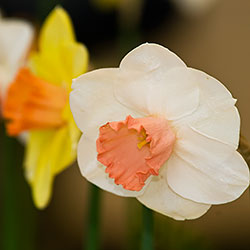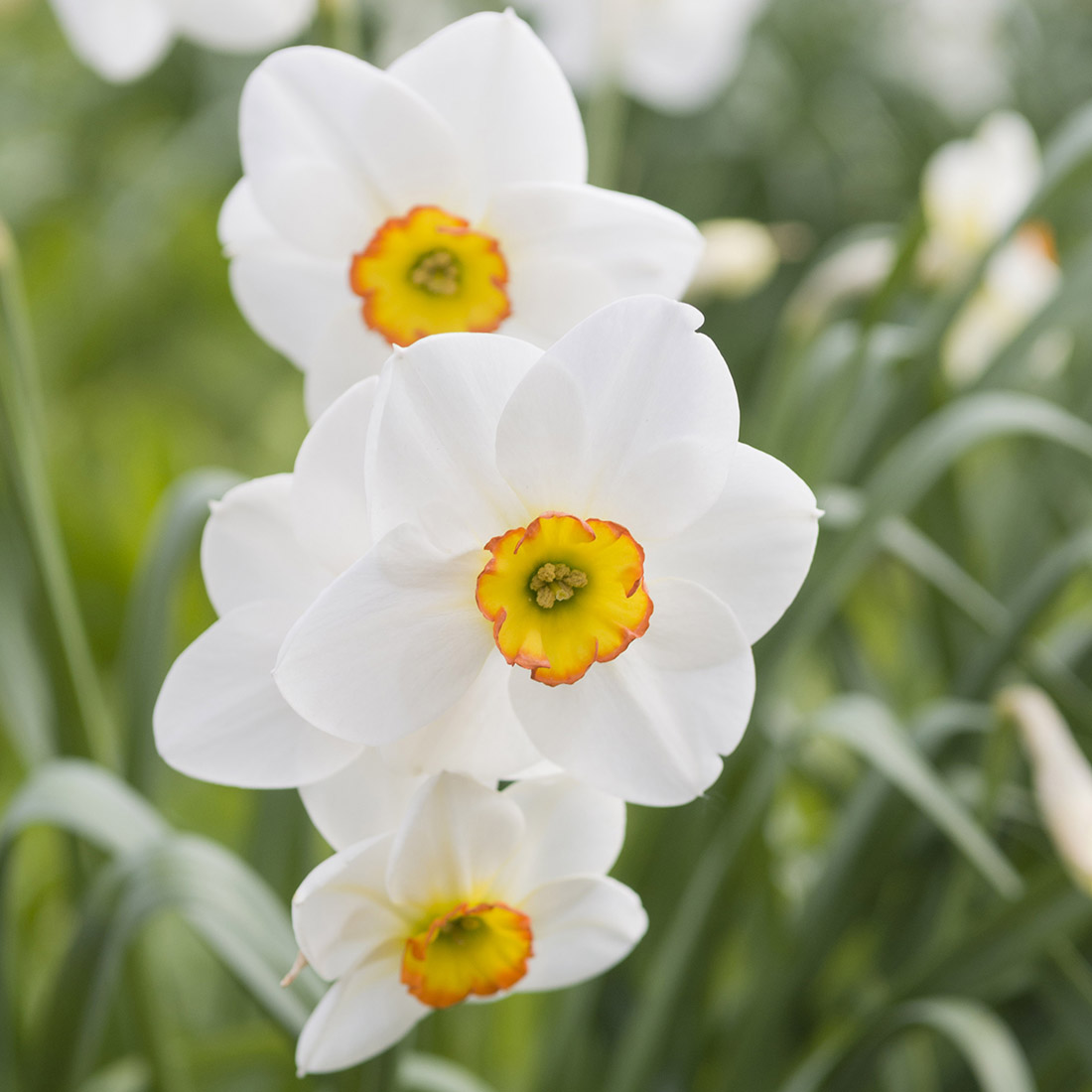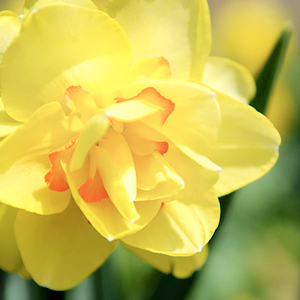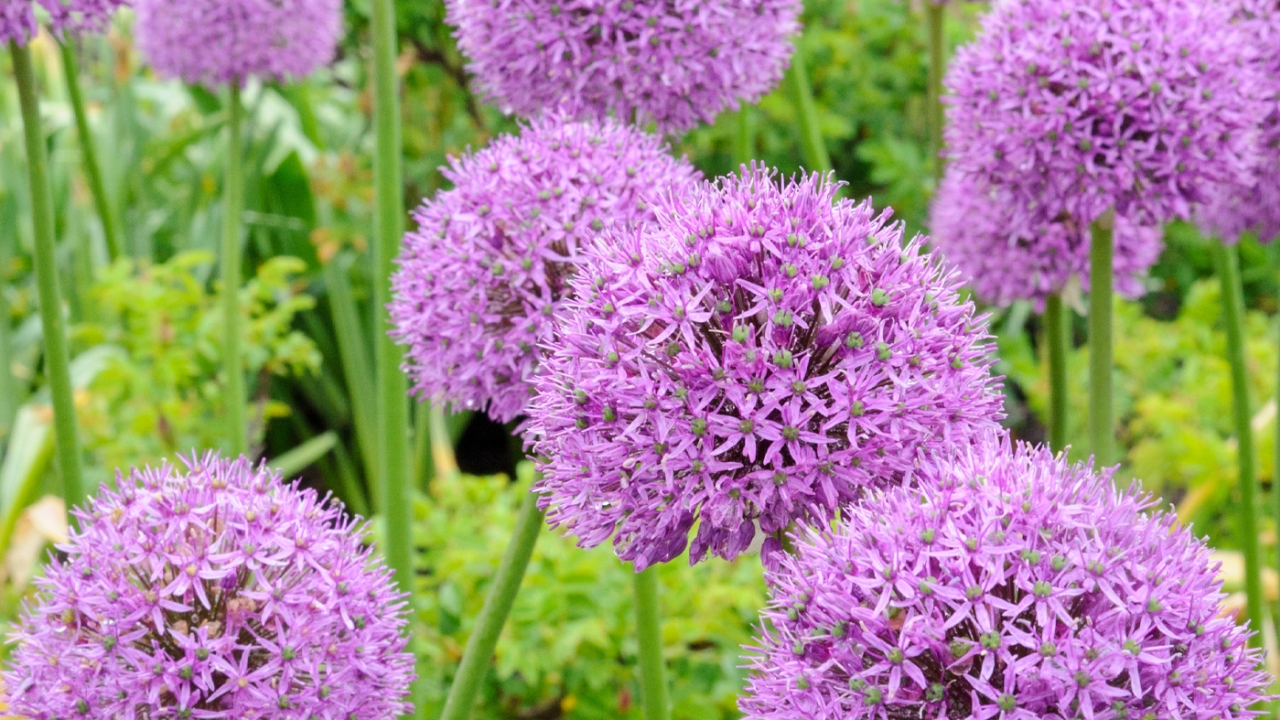

Paperwhite Daffodils
Narcissus papyraceus
One of the joys of indoor gardening is growing pots of fragrant paperwhite daffodils. During the cold, dreary, winter months, their delicate trusses of pure-white flowers offer a cheerful reminder that spring is not far off.
These flowering bulbs are known by many names—daffodil, jonquil, narcissus, gazette—but all are members of the genus Narcissus—the Latin/botanical name for all daffodils. According to the American Daffodil Society, there are between 40 and 200 different daffodil species, subspecies or varieties of species and more than 32,000 registered cultivars (named hybrids). They are divided into 13 divisions in an official classification system. Some people refer to any yellow daffodil as a jonquil. However, jonquil species and hybrids are characterized by several yellow flowers, strong scent, and rounded foliage and other attributes. So, while not every yellow daffodil is a jonquil, it is a narcissus.
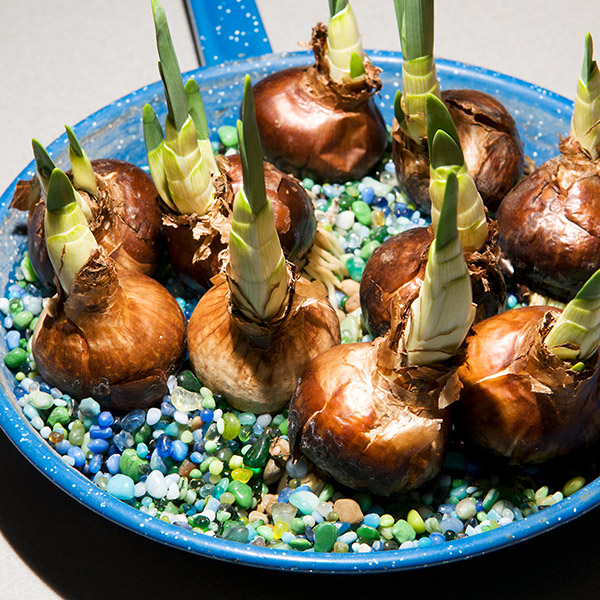
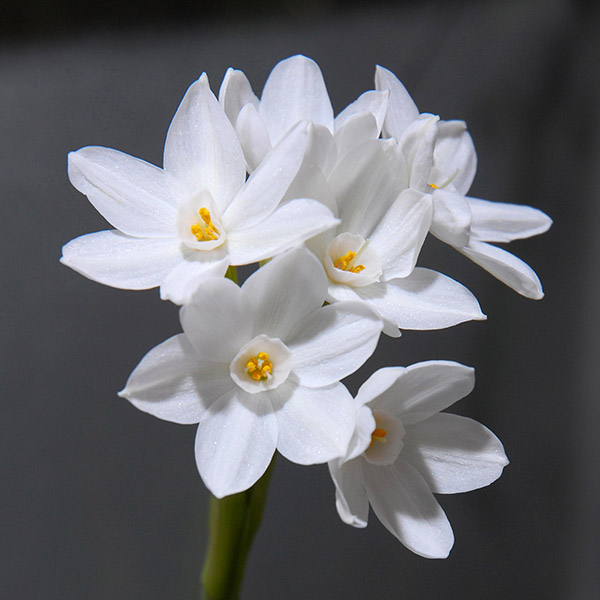
Coaxing Blooms Indoors
The majority of daffodils grown outdoors in northeastern Illinois are cold-hardy perennials that return each year. Paperwhite daffodils are not hardy beyond USDA Zone 7, so in our climate, they are treated as annuals. Enjoy their intoxicating fragrance indoors for many weeks where their scent can fill a room. When they’re finished blooming you can put them in the compost.
Paperwhites are among the easiest daffodils to grow indoors. Unlike others, they do not require pre-chilling—a cold treatment to trick them into thinking it’s winter. Bulbs are typically sold in garden centers and by mail-order sources from September through November. If you buy several bags of bulbs, you can stagger the bloom time by potting a few each week. Didn’t buy any bulbs in fall? No problem. In February and March, garden centers, groceries, and big-box stores often sell potted paperwhites in bud or bloom. Choose plants that are in bud and you’ll have a longer display time.
Planting Paperwhites
Once you acquire the bulbs in fall, look them over so that each one is firm and healthy. If they sport any blue-gray mold, wipe it off with a paper towel. Toss out any bulb that is squishy or soft. The leaves reach about 16 inches tall, becoming top-heavy when in bloom, so choose a sturdy ceramic container or a shallow “bulb pan” with drainage holes and a saucer or tray.
Fill the pot two-thirds with moistened, soilless potting mix. Place the bulbs with the narrow “necks” facing upward. You can set them closely together—touching one another—which will produce a big, showy, scented clump. Add enough potting mix to barely cover the bulb tips and tamp it down so that it’s about an inch below the pot’s edge. This will prevent potting mix from spilling over the sides when you water. Water sparingly until the bulbs sprout, and then keep the mix evenly moist. There’s no need to fertilize.
Growing in Water
Paperwhites will also grow in shallow water. Use a tall, narrow glass container and add a layer of clean, polished, river stones; smooth pebbles; small, tumbled glass balls (sold in hobby shops and dollar stores); or marble chips. Place the bulbs on top of the stones and add water until the bottom half of the bulbs are covered. The roots will anchor themselves around the stones. As the water evaporates, add more, but never cover the entire bulb or it will rot—and that will be stinky. If the container develops an odor, tip it out and replace with fresh water.
Companion Plants
Grape hyacinths (Muscari), crocus, tulips, and wheat grass are some of the beauties you can pair with paperwhites. Plant the paperwhite bulbs first, adding the smaller bulbs between and around them. Follow the instructions for planting depth on each of the bulb packages. Once all the bulbs are planted, sow some wheat grass seeds on top of the potting mix, tamp them down and water. Voila! You’ll have a miniature flowering meadow in a matter of weeks.
Challenges
Paperwhites can grow tall and leggy. That may happen if a room is too warm or if they’re not getting enough light. To prevent this, grow the bulbs in a cool space where they can get bright, indirect light. Once the buds form, move the pot where you want it displayed, keeping it away from heat sources and direct sun. This will extend the bloom period. If the leaves start to flop or splay open, tie them together with a bit of ribbon or twine. Another option is to place curly willow or forsythia branches in the pot to help support the foliage and flowers.
Will They Bloom Again Next Winter?
Hardy daffodils that are forced to bloom indoors can be planted outside in spring and enjoyed for years to come. However, paperwhite bulbs are not hardy below Zone 7 temperatures and will freeze, rot, and die if planted outdoors. If you’re an adventurous gardener, you can save the bulbs to try and force into bloom again next winter. When the plant has finished blooming, cut off the flowering stems at the base. Once the foliage turns yellow, it can be pulled away or cut off. Store the pot in a garage or basement. Or, if you grew them in water, dry the bulbs and store them in a paper bag. No water is necessary during the summer because the bulbs will be dormant. In October, plant them in a pot and place it in a sunny window. Sprinkle a teaspoon of granular fertilizer on the surface and water thoroughly. Keep the potting mix moist but not waterlogged. The fertilizer is necessary because the bulb used all of its energy producing flowers the previous year. In a few weeks, you may find new leaves poking up. It may not always work, but it’s a fun experiment.


